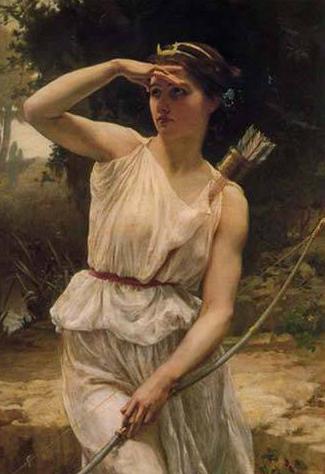Еврейский национальный костюм (фото). Дресс-код: еврейский гардероб, одежда, которая помнит
Еврейский национальный костюм (фото). Дресс-код: еврейский гардероб, одежда, которая помнит
Войти
Дресс-код: еврейский гардероб, одежда, которая помнит»
Woman’s outfit
Tafilalet region, Morocco, first half of the 20th century
Cotton and silk, silk-thread embroidery
Gift of Baroness Alix de Rothschild, Paris
Gift of Musée de l’Homme, Paris




Women’s Dress
Sweden (originally Germany), 1850s
Silk taffeta, , silk velvet, cotton lace
Lent by Judith Goldstein, née Hoffmann, Stockholm, Sweden

Baby’s coats

Wedding outfit
Sandor, Iraqi Kurdistan, 1930s
Raw silk, silk-thread embroidery
Purchased through the gift of Joseph Boxenbaum, Herzliya

Right: Henna dress
Iraq, Baghdad, 1891
Silk satin weave, silk and lace ribbons, tinsel embroidery
This dress belonged to Dakhla Rachel Mu`allem, Baghdad 1880–Teheran 1960, married at the age of 11.
Dakhla fled to Iran in 1948; when her children escaped Khomeini’s regime for London, they took the dress with them.
Gift of Dakhla’s daughter, Naomi Inbar, Ramat Gan.
Left: Wedding dress
Iraq, Baghdad, 1880s
Brocaded silk, silk ribbons, tinsel embroidery, hand sewn
Gift of Mazli F. Iny, New York, in memory of her mother Mas`uda Mathalon
.
Modesty in the Eye of the Beholder
Although emphasizing the breast, these dresses were nonetheless considered a symbol of female modesty. In 1906, Rabbi Yosef Hayyim, one of the leaders of the Baghdad Jewish community, even criticized women who abandoned this modest style in favor of open-coat dresses.

Clothes of Rabbi Hayyim Moshe Bejerano Efendi
Turkey, early 20th century
Broadcloth, gilt-metal-thread couched embroidery
Gift of Diamant Baratz Béjarano and Arnaldo Béjarano, Courbevoie, France

“The Great Dress” (berberisca or al kesswa l’kebira )”
Fez, Morocco, early 20th century
Silk velvet, gilt metal cords and braided ribbons
Gift of Perla Ben-Soussan, France Gift of Armand Amselem, France

Woman’s coat
.
Explosion of Color
An The dizzying colors of ikat displayed here highlight the clothing’s inner lining and give importance to often unseen parts of the garment. Due to its strong smell, the use of ikat was initially considered repugnant, and was exclusively a Jewish practice; however as the process was perfected it came to be a highly esteemed specialty.



Jewish woman’s wrap (izar) and face veil (khiliyye)
Baghdad, Iraq, late 19th – early 20th century
Silk, gilt metal thread; veil: horsehair
Gift of Helene Simon and Hanina Shasha, New York, in memory of their mother, Louise Zilka née Bashi
Gift of Mazli Nawi, Ramat Gan
.
The most famous of the Baghdad workshops belonged to master weaver Menashe Yitzhak Sa’at, nicknamed Abu-al-Izan (“father of the izar “) due to the fabric wraps in which he specialised. One year after Sa’at immigrated to Israel, the izar industry in Baghdad came to an end.

Jewish woman’s wrap (chader) and face veil (ruband)
Herat, Afghanistan, mid-20th century
Cotton, netted silk-thread embroidery
Purchased through the gift of Dr. Willy and Charlotte Reber, Valbella, Switzerland

Mourning scarves
Uzbekistan, early 20th century
Silk, reserved dye printing

Woman’s attire
Mashhad, Iran, early 20th century
Silk, silk velvet, cotton satin, gilt-metal-cord embroidery
Purchased through the gift of Bruce Kovner, New York
.
From Paris to Persia
When Quajar Shah Nasir al-Din and his wife embarked on a journey to Europe in 1873, they were inspired by the “ballerina” skirts they saw in Paris. Upon returning to Iran, they brought with them a new style of dress, characterized by heavily-pleated short skirts and tight pants

Tunis, Tunisia, early 20th century
Satin silk, gilt-metal-cord embroidery, cotton-thread embroidery on tulle
Tunis, Tunisia, early 20th century
Satin silk, gilt-metal-cord embroidery, cotton-thread embroidery on tulle
Tunis, Tunisia, early 20th century
Satin silk, gilt-metal-cord embroidery, cotton-thread embroidery on tulle
Tunis, Tunisia, early 20th century
Satin silk, gilt-metal-cord embroidery, cotton-thread embroidery on tulle

Women’s Festive Attire
Tripoli, Libya, early – mid-20th century
Wrap: Artificial silk; Blouse: Chiffon silk; Belt: Gilt silver
Gift of Louise Djerbi, Jerusalem in memory of Luly Raccah
Gift of Lionelle Arbib in memory of his grandmother Ida Arbib née Nahum Lent by the Habib family, Milan

Bridal Jacket
Isfahan, Iran, early 20th century
Silk velvet, silver tinsel embroidery

Married Woman’s Outfit
Salonika, Greece early 20th century
Silk, brocaded and ribbed, cotton lace
Gift of Esther Jeanne Haelion Ben-Susan, Paris in memory of the mother Gracia,
Gift of Flora and Shlomo Perahia, Claire and Robert Saltiel, Paris, in memory of their mother Rivka Perahia née Cohen
Gift of Vicki Sciaky, Tel Aviv, in memory of her husband Haim Joseph and her son Joseph Haim Sciaky,
Еврейский национальный костюм (фото). Дресс-код: еврейский гардероб, одежда, которая помнит
Войти
Дресс-код: еврейский гардероб, одежда, которая помнит
Давно собиралась рассказать об выставке еврейского костюма в музее Израиля в Иерусалиме. Выставка будет открыта до октября 2014 года.
Dress Codes: Revealing the Jewish Wardrobe
Clothing That Remembers » 


Woman’s outfit
Tafilalet region, Morocco, first half of the 20th century
Cotton and silk, silk-thread embroidery
Gift of Baroness Alix de Rothschild, Paris
Gift of Musée de l’Homme, Paris




Women’s Dress
Sweden (originally Germany), 1850s
Silk taffeta, , silk velvet, cotton lace
Lent by Judith Goldstein, née Hoffmann, Stockholm, Sweden

Baby’s coats

Wedding outfit
Sandor, Iraqi Kurdistan, 1930s
Raw silk, silk-thread embroidery
Purchased through the gift of Joseph Boxenbaum, Herzliya

Right: Henna dress
Iraq, Baghdad, 1891
Silk satin weave, silk and lace ribbons, tinsel embroidery
This dress belonged to Dakhla Rachel Mu`allem, Baghdad 1880–Teheran 1960, married at the age of 11.
Dakhla fled to Iran in 1948; when her children escaped Khomeini’s regime for London, they took the dress with them.
Gift of Dakhla’s daughter, Naomi Inbar, Ramat Gan.
Left: Wedding dress
Iraq, Baghdad, 1880s
Brocaded silk, silk ribbons, tinsel embroidery, hand sewn
Gift of Mazli F. Iny, New York, in memory of her mother Mas`uda Mathalon
.
Modesty in the Eye of the Beholder
Although emphasizing the breast, these dresses were nonetheless considered a symbol of female modesty. In 1906, Rabbi Yosef Hayyim, one of the leaders of the Baghdad Jewish community, even criticized women who abandoned this modest style in favor of open-coat dresses.

Clothes of Rabbi Hayyim Moshe Bejerano Efendi
Turkey, early 20th century
Broadcloth, gilt-metal-thread couched embroidery
Gift of Diamant Baratz Béjarano and Arnaldo Béjarano, Courbevoie, France

“The Great Dress” (berberisca or al kesswa l’kebira )”
Fez, Morocco, early 20th century
Silk velvet, gilt metal cords and braided ribbons
Gift of Perla Ben-Soussan, France Gift of Armand Amselem, France

Woman’s coat
.
Explosion of Color
An The dizzying colors of ikat displayed here highlight the clothing’s inner lining and give importance to often unseen parts of the garment. Due to its strong smell, the use of ikat was initially considered repugnant, and was exclusively a Jewish practice; however as the process was perfected it came to be a highly esteemed specialty.



Jewish woman’s wrap (izar) and face veil (khiliyye)
Baghdad, Iraq, late 19th – early 20th century
Silk, gilt metal thread; veil: horsehair
Gift of Helene Simon and Hanina Shasha, New York, in memory of their mother, Louise Zilka née Bashi
Gift of Mazli Nawi, Ramat Gan
.
The most famous of the Baghdad workshops belonged to master weaver Menashe Yitzhak Sa’at, nicknamed Abu-al-Izan (“father of the izar “) due to the fabric wraps in which he specialised. One year after Sa’at immigrated to Israel, the izar industry in Baghdad came to an end.

Jewish woman’s wrap (chader) and face veil (ruband)
Herat, Afghanistan, mid-20th century
Cotton, netted silk-thread embroidery
Purchased through the gift of Dr. Willy and Charlotte Reber, Valbella, Switzerland

Mourning scarves
Uzbekistan, early 20th century
Silk, reserved dye printing

Woman’s attire
Mashhad, Iran, early 20th century
Silk, silk velvet, cotton satin, gilt-metal-cord embroidery
Purchased through the gift of Bruce Kovner, New York
.
From Paris to Persia
When Quajar Shah Nasir al-Din and his wife embarked on a journey to Europe in 1873, they were inspired by the “ballerina” skirts they saw in Paris. Upon returning to Iran, they brought with them a new style of dress, characterized by heavily-pleated short skirts and tight pants

Tunis, Tunisia, early 20th century
Satin silk, gilt-metal-cord embroidery, cotton-thread embroidery on tulle
Tunis, Tunisia, early 20th century
Satin silk, gilt-metal-cord embroidery, cotton-thread embroidery on tulle
Tunis, Tunisia, early 20th century
Satin silk, gilt-metal-cord embroidery, cotton-thread embroidery on tulle
Tunis, Tunisia, early 20th century
Satin silk, gilt-metal-cord embroidery, cotton-thread embroidery on tulle

Women’s Festive Attire
Tripoli, Libya, early – mid-20th century
Wrap: Artificial silk; Blouse: Chiffon silk; Belt: Gilt silver
Gift of Louise Djerbi, Jerusalem in memory of Luly Raccah
Gift of Lionelle Arbib in memory of his grandmother Ida Arbib née Nahum Lent by the Habib family, Milan

Bridal Jacket
Isfahan, Iran, early 20th century
Silk velvet, silver tinsel embroidery

Married Woman’s Outfit
Salonika, Greece early 20th century
Silk, brocaded and ribbed, cotton lace
Gift of Esther Jeanne Haelion Ben-Susan, Paris in memory of the mother Gracia,
Gift of Flora and Shlomo Perahia, Claire and Robert Saltiel, Paris, in memory of their mother Rivka Perahia née Cohen
Gift of Vicki Sciaky, Tel Aviv, in memory of her husband Haim Joseph and her son Joseph Haim Sciaky,
Еврейский национальный костюм
Традиционная одежда евреев достаточно колоритная, что позволяет им выделяться из толпы, облачаясь в вещи в национальном стиле.
Немного истории
Как и все национальные костюмы, еврейский традиционный наряд имеет богатую историю.
Создавался он с расчетом на то, чтобы евреи могли ассимилироваться в любой стране. Причиной такого желания была нелюбовь представителей многих стран к лицам еврейской национальности.
Первые традиционные наряды создавались под влиянием вавилонян. Освободишись от рабства, евреи продолжали носить две рубашки (одну полотняную, другую шерстяную), кафтан и широкий пояс.
Во время царствования Соломона еврейские наряды стали роскошнее – использовались легкие воздушные ткани, костюмы украшались золотой вышивкой и драгоценными камнями. Знатные женщины любили вплетать нити жемчуга даже в свои прически, подчеркивая при этом свое социальное положение.
Но со временем такая роскошь исчезла из нарядов простых евреев. Традиционная одежда стала более сдержанной, много внимания уделялось деталям и тому, чтобы наряд подчеркивал религиозность человека и его принадлежность к определенной общине.
В двадцатом веке, чтобы особо не выделяться, евреи позаимствовали у европейцев модные в то время черные шляпы и длинные сюртуки. В таком виде было проще слиться с местными жителями, селясь в любом городке Европы. И даже, когда во всем мире подобные вещи вышли из моды, евреи продолжали и продолжают их носить.
Особенности
Говоря о национальном костюме евреев, следует упомянуть ряд нюансов, отличающий этот наряд от других.
Цвета и оттенки
В национальной еврейской одежде преобладают нейтральные тона. Основной из них – черный. Зимой также носили наряды коричневого или синего цвета. Летом в одежде доминировал белый цвет. Яркие “цветастые” наряды – это совсем не про еврейский традиционный костюм.
Ткани и крой
Еврейская культура всегда была исключительно городской. Поэтому женщины не занимались изготовлением материала самостоятельно, а покупали его. Материалы использовались самые разные, от более дешевых, до дорогих.
Разновидности
Традиционный мужской костюм состоит из простого черного сюртука и накидки.
Еврейское название этой накидки – «талит катан». Это неотъемлемый наряд национального одеяния, который представляет собой тканевый прямоугольник черного цвета с прорезью для головы и специальными кисточками по краям. Каждая из них заканчивается восемью нитями.
Отличительная черта этой накидки в том, что она, хоть и выглядит, как верхняя одежда, но носится не только поверх, но и под рубашку. Главное, чтобы кисти располагались поверх брюк.
Женский национальный костюм состоит из платья или блузки с юбкой и передника. Передник выполнял не только функцию защиты от бытовой грязи, но и охранял от сглаза.
Платья женщин старой веры были длинными и украшенными ручной вышивкой или кружевом. Руки скрывали за длинными рукавами, сужающимися к запястьям. В таком платье был также ворот стойка, украшенный кружевом и плотно обхватывающий шею. Плотным кольцом талию обхватывал и кожаный пояс.
Детский костюм для девочек практически не отличался от взрослого наряда. Платье также было достаточно закрытым, но более коротким. Мальчики до тринадцати лет не носили накидку «цитит». Ее позволялось носить только тем, кто достиг совершеннолетия, отпраздновав бармицву. Именно после этого события мальчик считался мужчиной.
Аксессуары и обувь
Каждый еврей свой традиционный наряд дополняет головным убором. Иногда их бывает даже несколько сразу – ермолка и поверх нее «каскет» или же «дашек». «Каскеты» внешним видом напоминают кепки старого фасона и широко распространены среди евреев, проживающих на территории России и Польши.
В повседневной жизни частью традиционного еврейского костюма является черная шляпа. Этот лаконичный головной убор, несмотря на кажущуюся простоту, очень много может рассказать о своем владельце.
Размер шляпы, ее элементы и то, как она сидит на голове, несут в себе информацию о социальном статусе владельца и том, к какое из течений иудаизма он исповедует .
Глубокий смысл заложен в фасон и размер ермолки. Если говорить в целом, она представляет собой круглую шапочку, которая ассоциируется у нас с еврейским нарядом. Название ермолки произошло от словосочетания «йерэ малка», то есть «боящийся владыки». Этими словами принято назвать верующих людей.
Ермолки создаются не только в разных цветах и фасонах, но еще и из разных материалов. Они могут быть, как войлочными, так и шерстяными или вязанными. Но выбирают их евреи, ориентируясь не на собственный вкус. Выбор определенной модели зависит от того, что носят другие евреи из общины.
Источники:
http://evu67.livejournal.com/361803.html
http://ornament-i-stil.livejournal.com/409510.html
http://wlooks.ru/nacionalnye-kostyumy/evrejskie/














